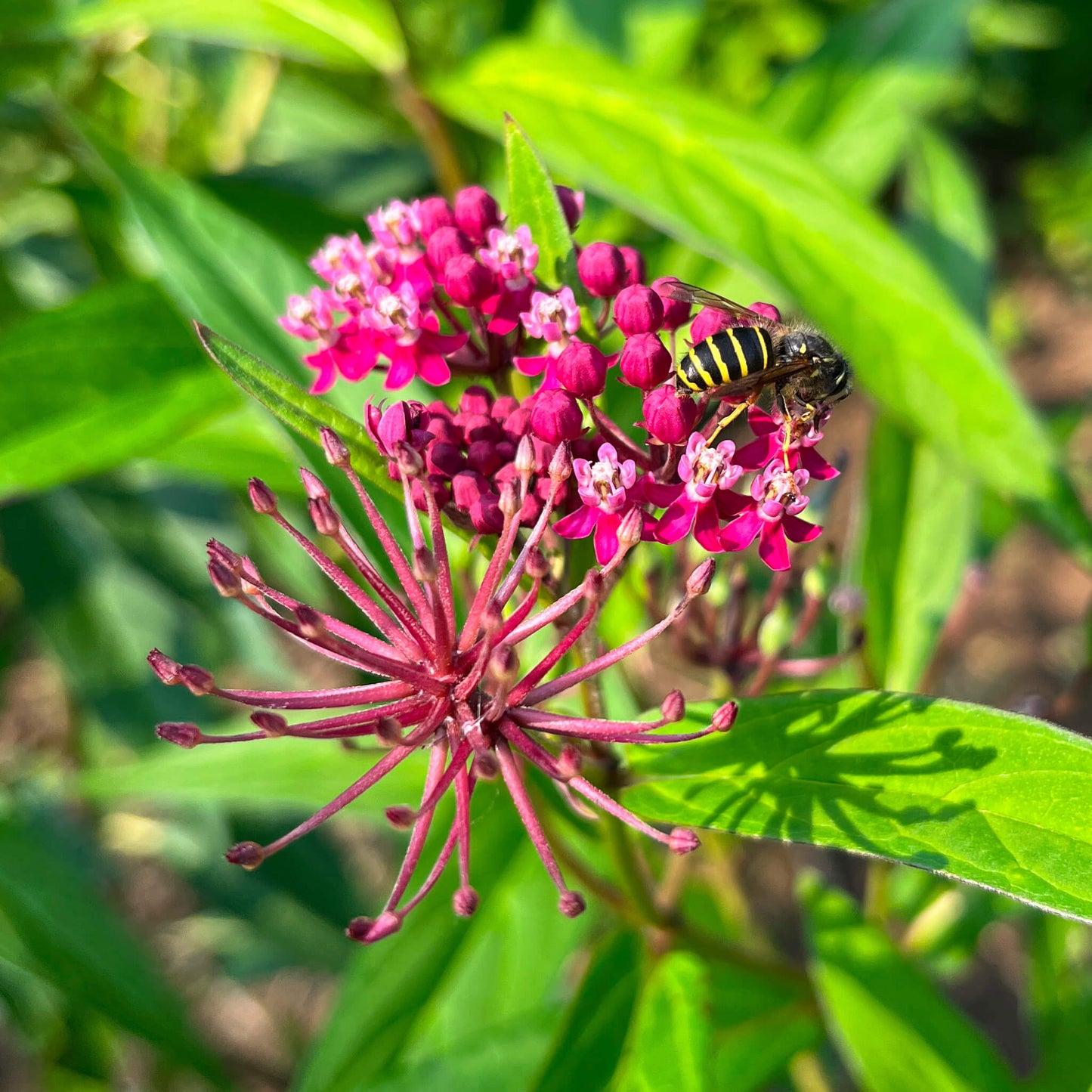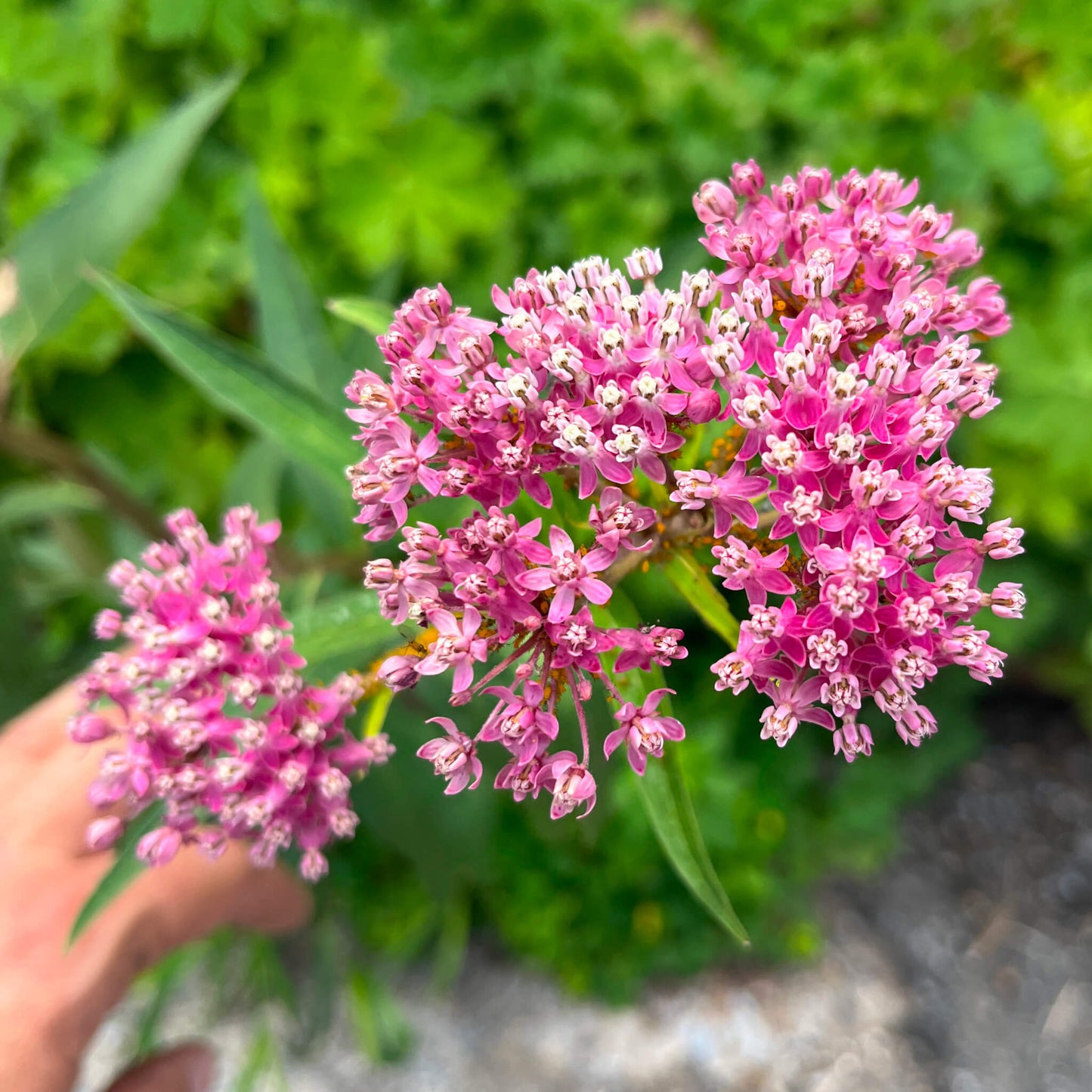This site is protected by hCaptcha and the hCaptcha Privacy Policy and Terms of Service apply.
For successful seedlings,
see the growing notes at the bottom of the page!
Swamp milkweed (Asclepias incarnata) is a perennial plant with a graceful look, known for its vibrant pink to red inflorescences that bloom in mid-summer, reaching heights of about 1 to 1.2 metres. Its flowers form large spherical umbels and emit a sweet fragrance that attracts pollinators, including monarch butterflies. By the end of summer, the flowers are replaced by long, narrow seed pods, which, once mature, open to release seeds adorned with silky tufts, adding visual charm in the fall. This hardy and attractive plant is particularly well-suited for moist, marshy soils, making it an ideal choice for rain gardens, shoreline strips, and wet areas of the garden. It thrives best in full sun and is relatively easy to cultivate.
Medicinal and Culinary Uses
Swamp milkweed is used to a lesser extent than common milkweed but still possesses some traditional medicinal properties. It has been employed to treat certain respiratory and digestive issues due to its purifying and diuretic properties. However, this plant is not commonly consumed in cooking, and if it is, thorough cooking is necessary to neutralize its toxins. It is always advisable to consult reliable resources before any medicinal or culinary use.
Ecological Role
Ecologically, swamp milkweed is valuable for the preservation of monarch butterflies, serving as a host plant for their caterpillars and a nectar source for adults. It also attracts a wide variety of pollinators, such as bees and other butterflies, enriching biodiversity and supporting the health of local ecosystems. Its root system helps stabilize moist soils, making it useful in preventing erosion in riparian and marshy areas. Planting swamp milkweed in natural gardens or ecological restoration areas contributes to the protection of pollinators and the maintenance of soil quality in wet environments.
Swamp milkweed seeds require cold stratification to ensure germination. See the cultivation notes below for more details.
Akène cannot assume any responsibility for the use of plants for therapeutic purposes. Always seek advice from a professional before using a medicinal or edible plant.
Sowing and Growing
Technical Details
Seeds per packet: 60
Family: Apocynaceae
Scientific name: Asclepias incarnata
Life cycle: Perennial
Hardiness zone: 3
Soil type: Loamy
Soil moisture level: Humid to wet
Soil - additional attributes: Rich
Light: Sun
Blooming: July to August
Spacing: 45 cm
Height: 120 cm
Deer resistance: High
Stratification: 30 days
Scarification: No
Germination time: 15 to 25 days
Sowing depth: 3 mm



